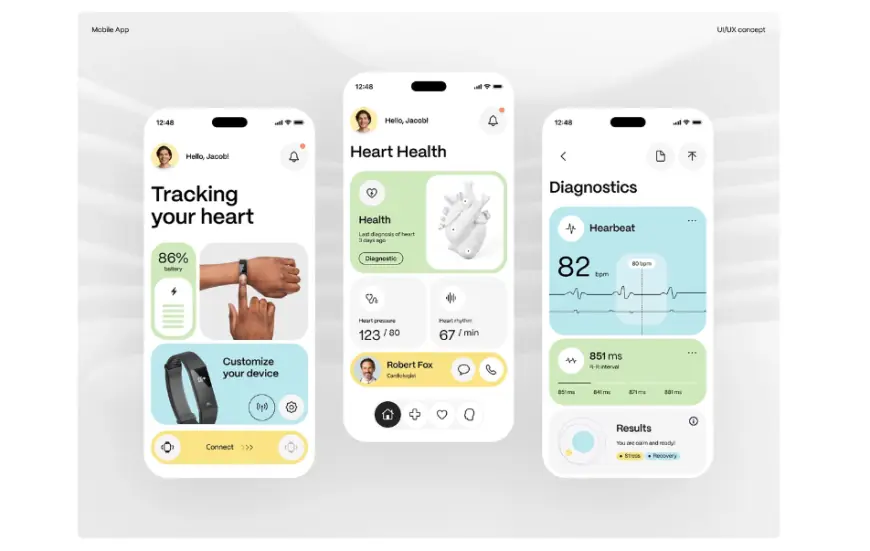How to Hire a Top Mobile App Development Company in Canada on a Budget
How to Hire a Top Mobile App Development Company in Canada on a Budget

Developing a mobile app can feel like a journey to the North Star – exciting, ambitious, and filled with potential, but also daunting and a bit uncertain. Finding the right partner to guide you on this journey is crucial, especially when budget constraints are a concern. This guide will equip you with the knowledge to successfully hire a top-tier Canadian mobile app development company without breaking the bank.
Introduction
The Canadian tech scene is a vibrant ecosystem brimming with innovative companies and talented developers. Partnering with a Canadian company can offer numerous advantages, from access to a highly skilled workforce to a strong emphasis on quality and innovation. However, finding the right partner while staying within your budget requires careful planning and strategic decision-making.
Defining Your App Idea and Setting a Realistic Budget
Before embarking on your app development journey, it's essential to have a clear vision and a realistic budget.
Identify Your App's Purpose and Target Audience
What problem does your app solve? Who are you building this app for? Defining your app's purpose and target audience is crucial for several reasons:
- Focuses Development: A clear understanding of your target audience will guide your development team in making design and functionality decisions that resonate with your users.
- Refines Scope: By identifying your app's core purpose, you can avoid scope creep, a common culprit of budget overruns.
- Facilitates Marketing: Knowing your target audience allows you to tailor your marketing efforts effectively, reaching the right users and maximizing your return on investment (ROI).
Prioritize Features and Functionality to Manage Costs
Not all features are created equal. Prioritize the core features that are essential for your app's success and user satisfaction. Defer less critical features to later stages of development or consider them as potential future updates. This "minimum viable product" (MVP) approach allows you to launch your app quickly and gather user feedback before investing heavily in additional features.
Research Average Mobile App Development Costs in Canada
Researching average development costs in Canada will give you a realistic benchmark for your budget.
- Factor in hourly rates: Research typical hourly rates for developers in different Canadian cities and consider the experience level of the developers you require.
- Explore project-based pricing models: Investigate project-based pricing models, where the development cost is fixed based on the agreed-upon scope of work.
- Account for additional expenses: Remember to factor in additional costs such as design, testing, marketing, ongoing maintenance, and potential revisions.
Finding the Right Development Partner
Finding the right Canadian development partner is akin to finding a trusted compass to guide you through the app development landscape.
Consider Your Project Requirements and Budgetary Constraints
Clearly define your project requirements and budget constraints upfront. This will help you narrow down your search and avoid wasting time with companies that don't align with your needs and financial limitations.
Evaluate Company Expertise, Experience, and Portfolio
Thoroughly research potential partners.
- Evaluate their portfolio: Examine their past projects to assess the quality of their work and their experience in developing apps similar to yours.
- Investigate their expertise: Look for companies with a strong understanding of your target market and experience in the relevant technologies and platforms (iOS, Android).
- Read client testimonials: Read client testimonials to gain insights into their past experiences working with the company, including communication, project management, and overall satisfaction.
Look for Transparent Communication and a Collaborative Approach
Effective communication is paramount for a successful partnership.
- Seek companies that prioritize open and honest communication.
- Look for a collaborative approach where your input is valued and incorporated throughout the development process.
- Inquire about their communication protocols and how they plan to keep you informed about project progress.
Explore Alternative Engagement Models
Consider alternative engagement models beyond traditional hourly rates.
- Project-based contracts: These contracts outline a fixed price for a specific set of deliverables, providing greater budget predictability.
- Dedicated teams: This model allows you to hire a dedicated team of developers on a contractual basis, giving you more control over the development process and potentially reducing costs.
Negotiating and Signing a Contract
Once you've shortlisted a few potential partners, it's time to negotiate and sign a contract.
Clearly Define Project Scope and Deliverables
The contract should clearly define the scope of the project, including all deliverables, milestones, and timelines. This will help prevent misunderstandings and scope creep later on.
Establish a Payment Schedule and Milestones
Establish a clear payment schedule with milestones to ensure that payments are made at appropriate intervals as the project progresses.
Outline Communication Protocols and Dispute Resolution Procedures
The contract should outline communication protocols, including reporting frequency, preferred communication channels, and escalation procedures for resolving any disputes.
Optimizing the Development Process for Cost-Effectiveness
Streamlining your development process can significantly impact your project's budget.
Leverage Agile Development Methodologies for Flexibility
Agile methodologies, such as Scrum or Kanban, allow for flexibility and adaptability.
- Work in short sprints: This iterative approach allows you to make adjustments based on user feedback and changing requirements, minimizing the risk of costly rework.
- Prioritize tasks: Focus on the most critical features first, ensuring that you deliver value to users quickly.
Prioritize Clear Communication and Comprehensive Documentation
Maintain clear and consistent communication throughout the development process.
- Regularly review progress and address any concerns promptly.
- Maintain comprehensive documentation, including project requirements, design specifications, and testing results.
Implement Efficient Testing Practices to Catch Bugs Early
Thorough testing is crucial for identifying and fixing bugs early on, which can save time and money in the long run.
- Implement a robust testing strategy, including unit testing, integration testing, and user acceptance testing.
- Conduct regular code reviews to ensure code quality and maintainability.
Consider Open-Source Technologies and Tools When Possible
Leveraging open-source technologies and tools can significantly reduce development costs.
- Explore open-source platforms, libraries, and frameworks that can be used to build and enhance your app's functionality.
- This can significantly reduce development time and costs while still delivering a high-quality product.
Additional Tips for Success
- Design a User-Friendly and Intuitive App Interface: Invest in a well-designed user interface (UI) and user experience (UX) to attract and retain users.
- Focus on Core Functionality and a Seamless User Experience: Prioritize core functionality and a seamless user experience over flashy features.
- Plan for a Phased Launch and Gather User Feedback Early: Launch your app in phases, starting with a minimum viable product (MVP), and gather user feedback to inform future development.
- Explore App Monetization Strategies to Offset Development Costs: Explore various app monetization strategies, such as in-app purchases, subscriptions, and advertising, to generate revenue and offset development costs.
Conclusion
Hiring a Canadian mobile app development company can be a rewarding experience, but it requires careful planning and diligent execution. By following the tips outlined in this guide, you can navigate the process effectively, find the right partner, and develop a successful app within your budget.
Remember, building a successful app is an ongoing journey. Continuously gather user feedback, analyze app performance, and adapt your strategy based on market trends and user needs.
What's Your Reaction?
 Like
0
Like
0
 Dislike
0
Dislike
0
 Love
0
Love
0
 Funny
0
Funny
0
 Angry
0
Angry
0
 Sad
0
Sad
0
 Wow
0
Wow
0















































